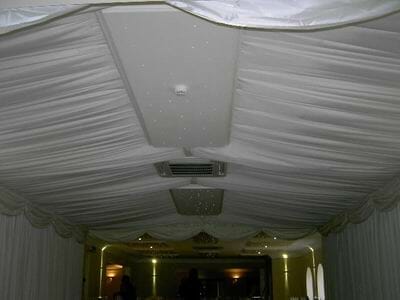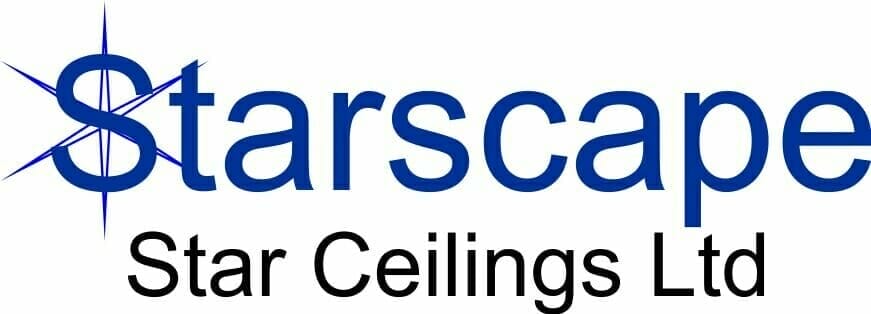From the East of England comes this report of a commercial installation in a country hotel restaurant near Boston. The work was carried out by Julian Thompson of JES Electrical, ably assisted by his wife Jane, also an electrician. That said, here at Starscape we’re always at pains to point out that apart from supplying power to the light source – which may be as simple as plugging it into the nearest handy wall socket – installation of fibres optics is actually not electrical work, even though electricians are often called upon to do the job.
The project at “The Poachers” entailed work in three separate areas – the restaurant, a function room and an associated dance floor area.

In the L-shaped restaurant, which involved about 24 square metres, Julian opted for a star density of 20 per square metre, using 0.75mm and 1mm fibres in a 3:1 ratio. Rather than glue the fibres in place, he opted to secure them above using staples which were tight enough to help keep the fibres in place in their holes, but loose enough that it would be possible to pull a few millimetres through following any future repainting of the ceiling.
“My customer was so pleased with the result that he asked us to design an effect for the main function room area,” reports Julian.
Since there was no access above the ceiling, Julian had to put the fibres into panels rather than directly into the ceiling itself. “We cut ten 12mm x 1200 x 1200 MDF panels and trimmed them with profiled timber edgings to finish and placed 40 fibres per square metre in the same ratio as the restaurant ceiling,” he explained.
Above the dance floor the fibres were installed in 2400x 900 MDF panels beneath filmy marquee lining. There are 12 panels here, with the fibres illuminated by a single light source. The panels are suspended by 10mm threaded rods to facilitate future maintenance.
The hotel is a popular venue for weddings and Julian reports that the enhancement of the lighting in these areas immediately produced an increase in bookings.

Given the size and nature of the job, Julian decided to buy fibre on the spool and to make up his own harnesses, rather than ask Starscape to supply ready-made harnesses. On larger, or more complicated projects this often works out as the most cost-effective solution. In minimises waste and the fibre which is left over can then be used for the next job.
